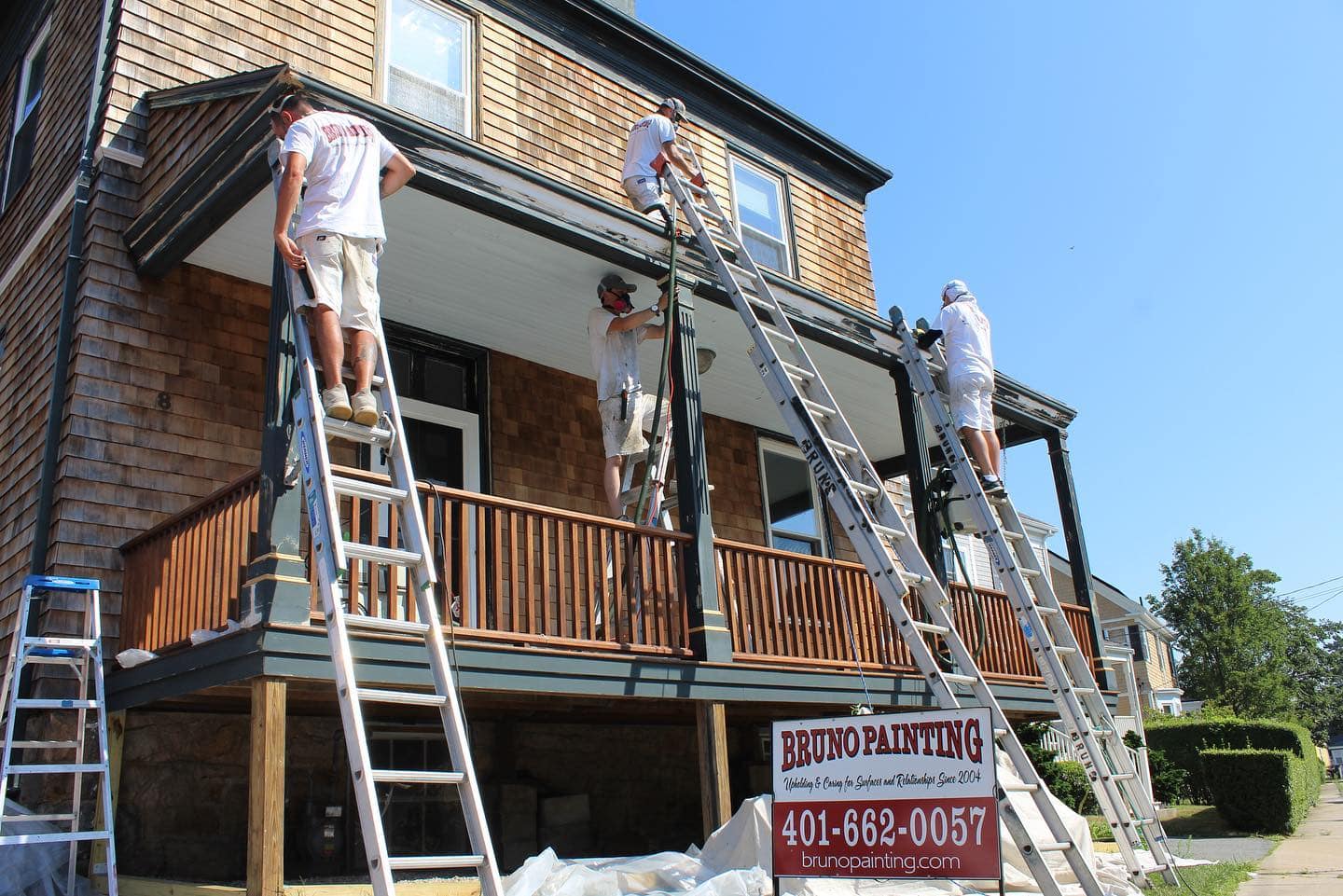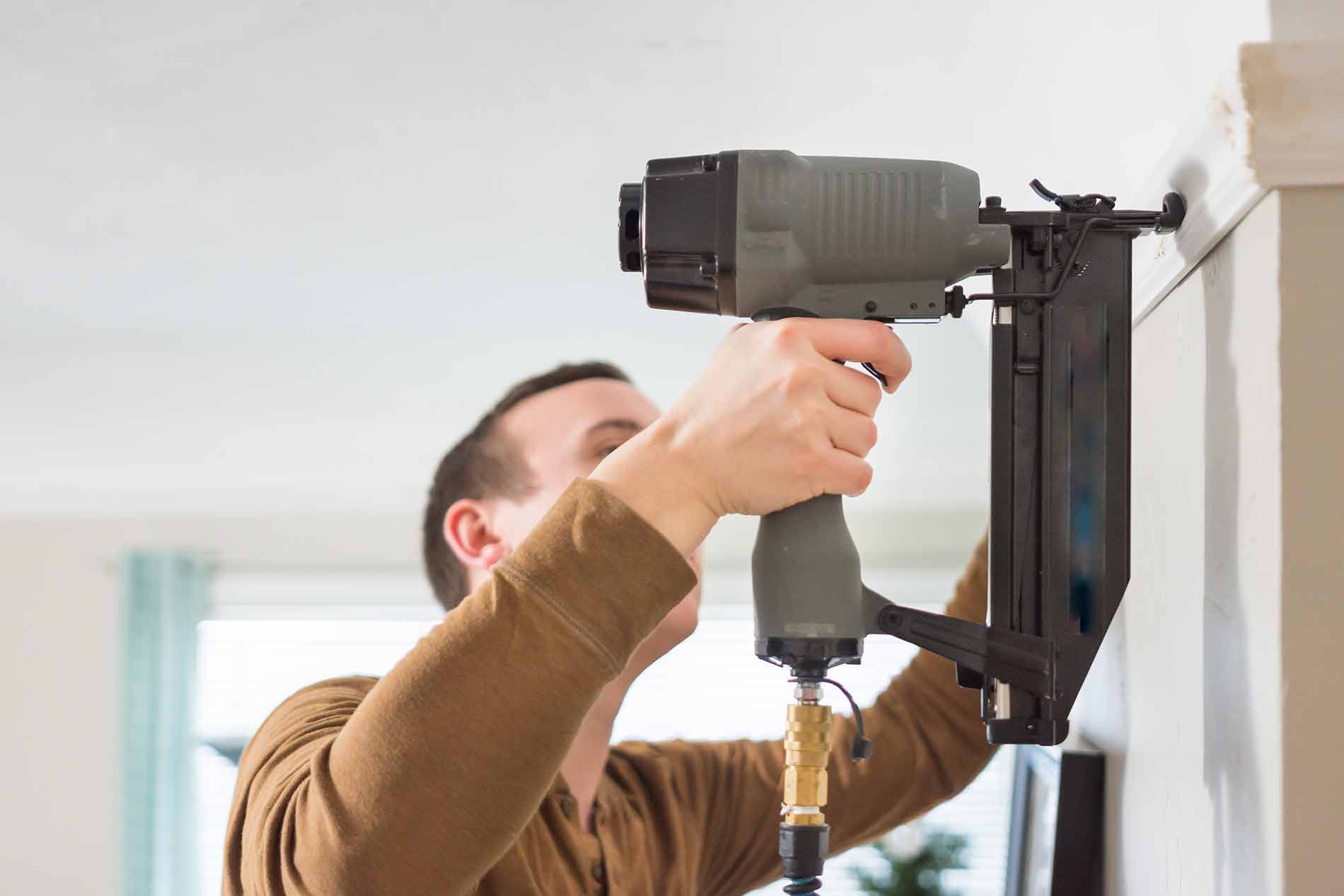Nothing transforms the outward appearance of your home as quickly as a new coat of paint. Whether your goal is to enhance curb appeal for a home sale or simply enjoy a more attractive residence, the exterior painting of your house is a great first step in achieving those aspirations.
Our guide today will cover several essential aspects of revitalizing your home's exterior. But before delving into the details, let's first explore the reasons why repairing and repainting the outside of your home is beneficial.
Undertaking the task of exterior house painting requires effort and investment. If you're contemplating whether the value of applying a fresh coat of paint to your home's exterior justifies the cost, the answer is unequivocally YES.
Here are the benefits:
Your home reflects your identity, and everyone desires a residence that looks as remarkable as it feels. Achieving this involves maintaining an impressive exterior, and a quality paint job is a pivotal step in creating excellent curb appeal.
Choose a color that complements your home's aesthetics and harmonizes with the landscaping. Consider neighboring houses to avoid color clashes.
While you've already invested substantially in your home's value, maintaining a fresh and sharp exterior ensures its value continues rising. An attractive exterior leaves a positive first impression on visitors and potential homebuyers, ultimately contributing to a higher resale value.
During the painting process, professional painters identify significant issues that might have gone unnoticed. Over time, issues like mold, mildew, rotting wood, and water stains can affect your walls. Regular painting helps reveal and address such damages before they become more apparent.
Early detection allows for less invasive and more cost-effective repairs.
Beyond aesthetics, a fresh exterior paint job serves as a protective layer against various elements, including weather damage, dust, and insects.
Quality paints act as a barrier, preventing wood from rotting and mitigating the need for more extensive and costly exterior painting in the future.
Understanding the necessity of regular house exterior painting, you may wonder, "How often should I paint it?" Let's answer that question.
There are unmistakable signs, such as chipping and cracking paint, indicating that your home requires exterior painting. However, some less conspicuous indications can also signal the need for a repaint.
While there is no fixed timeline since each home is unique, some general guidelines exist, although various factors can influence the timing.
Most experts recommend repainting exterior walls every 5-10 years, taking into account factors such as climate, the quality of the previous paint job, and other considerations we'll discuss later.
Here are the approximate intervals for different materials:
Wood siding: Typically, this may need repainting every 3-7 years, averaging around every four years due to staining.
Keep in mind that these are general estimates, and the actual timing may vary based on specific conditions and maintenance practices for each home.

Several factors influence the longevity of an exterior paint job, with three major contributors being the previous paint application, home maintenance practices, and the climate and weather conditions.
When determining the potential lifespan of your home's exterior painting, consider the following:
Quality and Type of Paint: The durability is affected by the quality and type of paint used. High-quality paints, particularly 100 percent acrylic, resist fading and last longer.
Number of Coats: Applying two or three coats, especially by professional painters, contributes to a longer-lasting paint job.
Color Selection: Lighter shades generally endure longer, and the color chosen can impact the overall longevity.
It is helpful to know the details of the previous paint job, including the season it was conducted. Weather conditions during painting can influence how well the paint dries.
Proactive maintenance is crucial for extending the life of your exterior paint. Regularly inspect the exterior for signs of:
Cracks, Wear, and Tear: Promptly address any structural issues before they escalate.
Infestations and Rot: Be vigilant for insect or rodent infestations, rot, dampness, and mold.
Dirt and Moss: Regularly clean dirt and moss to prevent damage to the paint.
Addressing these issues ensures a longer-lasting paint job.
The climate and weather in your locality significantly impact the longevity of your exterior paint:
Sun Exposure: Homes without tree cover may experience faster fading.
Extreme Weather Conditions: Intense storms and harsh winters can expedite paint’s aging.
Considering these factors, it's crucial to understand the best time to paint your home. If you have any further questions or need additional information, feel free to ask.
The drying process of your paint hinges on weather conditions and the temperature during application. To ensure a flawless paint job, it's crucial to undertake the work in warm weather.
Additionally, monitoring the weather in the days leading up to the painting project is a good idea. If it rains before your scheduled painting day, allow several days for your siding to dry. The paint requires sufficient time to cure properly, so ensure the weather forecast is sunny for the days following your project.
Painting during periods without major temperature fluctuations from day to night is also key. Significant temperature changes can cause the paint to react, hindering proper curing and resulting in uneven surfaces with peeling and cracking.
Hence, the optimal times for painting house exteriors are early summer and early fall. These periods offer the most favorable weather conditions, characterized by minimal temperature fluctuations and reduced chances of rain, ensuring a successful and long-lasting paint job.
We've highlighted early summer as an optimal period for house exterior painting. However, while summers typically offer reliably dry weather conducive to painting, they sometimes present challenges due to extreme temperatures.
High temperatures can accelerate the drying process, potentially resulting in an imperfect finish with color clumps and visible brush marks on surfaces.
Selecting a day with moderate temperatures and humidity is advisable to achieve an ideal outcome. Paint tends to dry well in conditions that are not excessively humid.
Avoid Painting in Wet Conditions:
Before starting the painting process, always thoroughly dry the surfaces you plan to paint. This significantly increases the likelihood of achieving a smooth, perfectly even painted surface. Therefore, steer clear of painting during rainy or excessively humid weather.

Prepare Your Siding Before Painting:
Before starting the painting process, ensure your siding is in optimal condition. Address cracks and holes in finishes like stucco, replace any rotten wood, treat for insects and mold, and putty any surface pitting. If needed, consider sandblasting to remove peeling or cracking paint. Follow this preparation with a thorough power wash, applying the recommended pressure.
Allow Surfaces to Dry Completely:
After the power wash, allow your surfaces to dry thoroughly. This ensures there is no trapped moisture beneath the paint. If heavy rain occurs, this time allows your house to dry effectively.
Painting the exterior can be a cost-effective project for those accustomed to handling home renovations. However, before undertaking this task, it's essential to consider various tools, stress factors, and safety considerations.
Type of Home:
Some homes are more challenging to paint than others. Older, taller houses, especially those with intricate designs, are delicate and may be better left to professional painters.
Straight exteriors on box-shaped houses are more easily painted than irregularly shaped homes with multiple stories.
Prep-Work Needed:
Certain surfaces require extensive prep work. If there's significant mold or severe peeling, consulting an experienced painter to address these issues beforehand is advisable.
Lead Paints:
Homes built before 1978 may have leaded paint. DIYers need to learn safe removal and handling techniques.
Tools and Materials:
Evaluate the cost of purchasing or renting painting equipment against the expense of hiring professionals. Necessary tools include lifts, ladders, power washers, cleaning agents, scrub brushes, paint removers, drop cloths, masking tape, and more.
Skills and Experience: Assess whether you possess the necessary skills and experience for a successful DIY project.
Time and Labor: Consider the availability of time and labor required for the project.
If you are confident in your abilities, taking the DIY route is an option. However, it's crucial not to take shortcuts, as your home is a valuable investment deserving of your best efforts.
If you’re uncertain - or if you just value your leisure time - seeking the expertise of a professional painter is a viable alternative. Bruno Painting is available for those in the Rhode Island areas to provide estimated costs and ensure a smooth and inviting exterior finish for your home.

At Bruno Painting, we streamline the process of refreshing your home, eliminating worries and hassles.
Our team of experts is dedicated to delivering the highest quality and smoothest results, turning your home into a focal point in your neighborhood.
We handle every aspect of painting jobs, from meticulous preparation work to the final finishing touches. With Bruno Painting, our trained professional painters will transform your home into a source of pride.